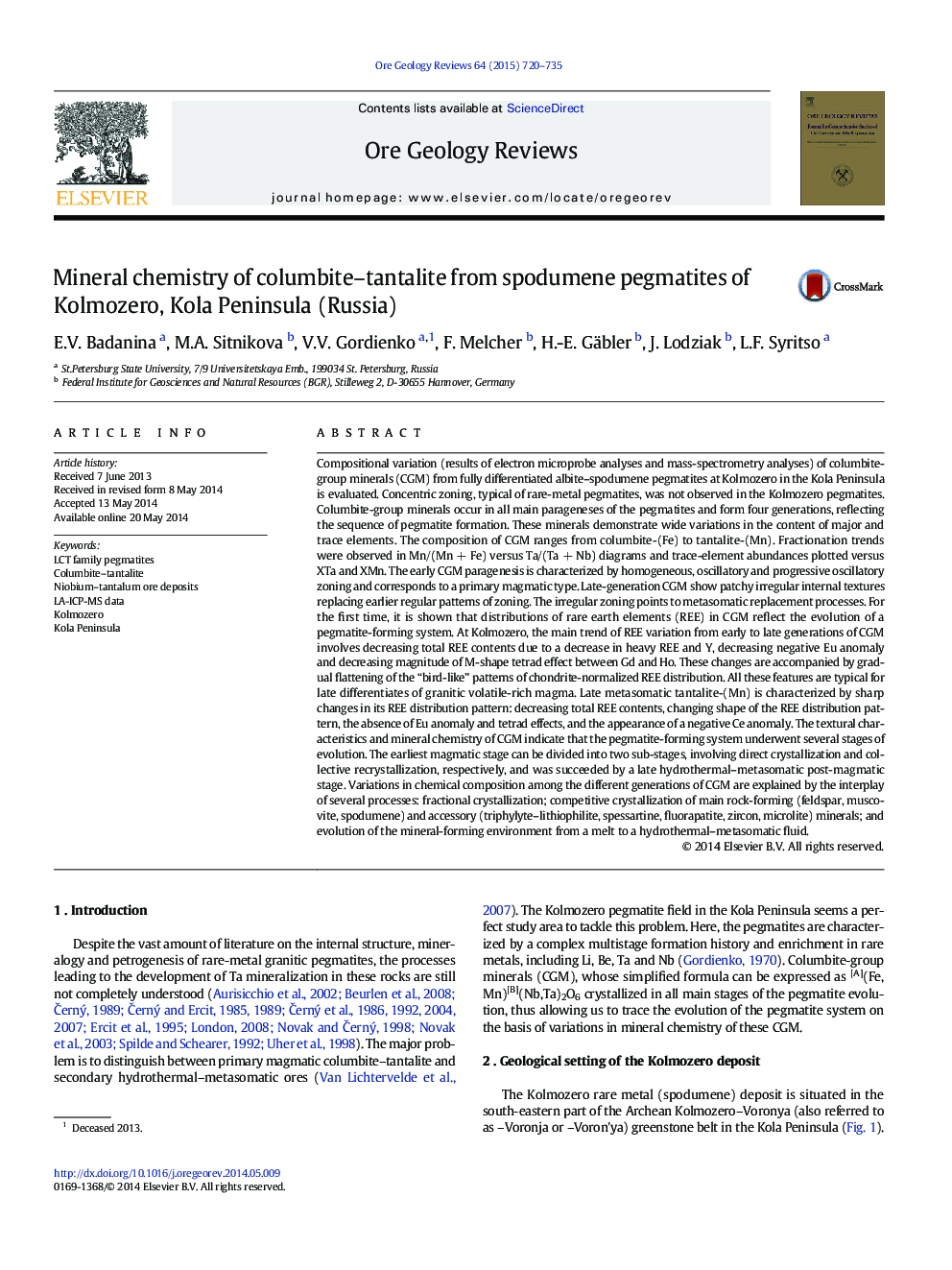| Article ID | Journal | Published Year | Pages | File Type |
|---|---|---|---|---|
| 4697131 | Ore Geology Reviews | 2015 | 16 Pages |
Compositional variation (results of electron microprobe analyses and mass-spectrometry analyses) of columbite-group minerals (CGM) from fully differentiated albite–spodumene pegmatites at Kolmozero in the Kola Peninsula is evaluated. Concentric zoning, typical of rare-metal pegmatites, was not observed in the Kolmozero pegmatites. Columbite-group minerals occur in all main parageneses of the pegmatites and form four generations, reflecting the sequence of pegmatite formation. These minerals demonstrate wide variations in the content of major and trace elements. The composition of CGM ranges from columbite-(Fe) to tantalite-(Mn). Fractionation trends were observed in Mn/(Mn + Fe) versus Ta/(Ta + Nb) diagrams and trace-element abundances plotted versus XTa and XMn. The early CGM paragenesis is characterized by homogeneous, oscillatory and progressive oscillatory zoning and corresponds to a primary magmatic type. Late-generation CGM show patchy irregular internal textures replacing earlier regular patterns of zoning. The irregular zoning points to metasomatic replacement processes. For the first time, it is shown that distributions of rare earth elements (REE) in CGM reflect the evolution of a pegmatite-forming system. At Kolmozero, the main trend of REE variation from early to late generations of CGM involves decreasing total REE contents due to a decrease in heavy REE and Y, decreasing negative Eu anomaly and decreasing magnitude of M-shape tetrad effect between Gd and Ho. These changes are accompanied by gradual flattening of the “bird-like” patterns of chondrite-normalized REE distribution. All these features are typical for late differentiates of granitic volatile-rich magma. Late metasomatic tantalite-(Mn) is characterized by sharp changes in its REE distribution pattern: decreasing total REE contents, changing shape of the REE distribution pattern, the absence of Eu anomaly and tetrad effects, and the appearance of a negative Ce anomaly. The textural characteristics and mineral chemistry of CGM indicate that the pegmatite-forming system underwent several stages of evolution. The earliest magmatic stage can be divided into two sub-stages, involving direct crystallization and collective recrystallization, respectively, and was succeeded by a late hydrothermal–metasomatic post-magmatic stage. Variations in chemical composition among the different generations of CGM are explained by the interplay of several processes: fractional crystallization; competitive crystallization of main rock-forming (feldspar, muscovite, spodumene) and accessory (triphylyte–lithiophilite, spessartine, fluorapatite, zircon, microlite) minerals; and evolution of the mineral-forming environment from a melt to a hydrothermal–metasomatic fluid.
